Historical places in Japan provide an interesting insight into its centuries-long cultural heritage and ancient traditions. From breathtaking castles and peaceful temples to sacred shrines and ancient cities, they welcome millions of tourists each year. A visit to them transports tourists into tales of samurai, emperors, and century-old rituals. Japan’s blend of nature spots and cultural heritage makes it an ideal destination for history lovers. Famous global sites such as temples in Kyoto and Himeji Castle boast architectural wonders and centuries of intriguing history, and they are must-see spots.
10 Historical Places In Japan You Must See
These famous historical places in Japan combine cultural significance, architectural beauty, and richness of history.
1. Himeji Castle
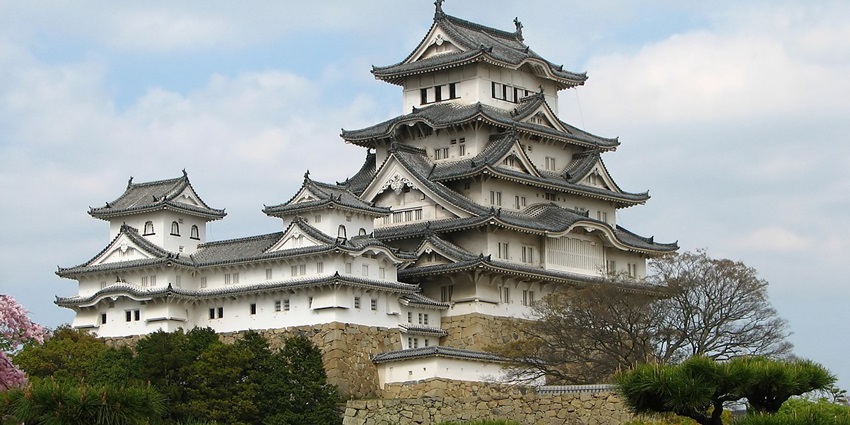
Photo: Bernard Gagnon / Wikimedia Commons
Himeji Castle, situated in Hyogo Prefecture, ranks among Japan’s most stunning and preserved castles. Also known as the “White Heron Castle” for its pure white exterior, this castle was constructed in the 1600s and is presently a UNESCO World Heritage Site. The intricate defensive style of this castle incorporates many gates, maze-like corridors, and fortified walls that were designed to disorient and deter invaders. Visitors can walk through the history of the samurai of the castle by walking around its monumental architecture.
Location: Himeji, Hyogo Prefecture
Major Attractions: White Heron exterior, Defence maze, Several gates, Scenic gardens
2. Kyoto’s Kinkaku-ji (Golden Pavilion)
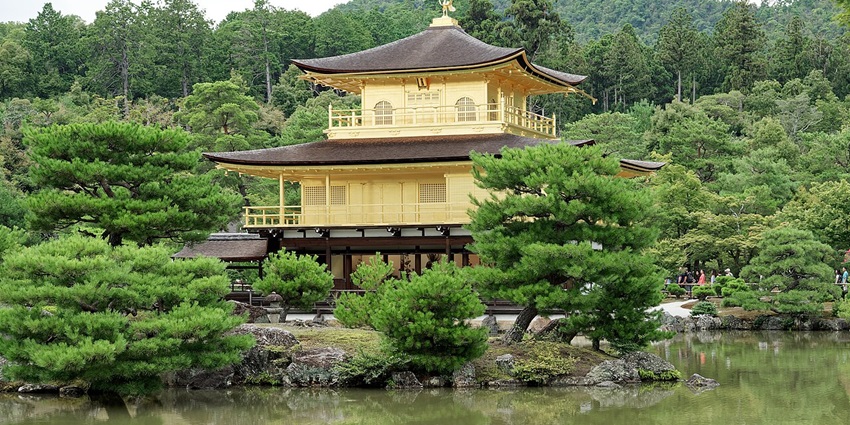
Photo: Jakub Hałun / Wikimedia Commons
Kinkaku-ji, or the Golden Pavilion, is one of Kyoto’s most celebrated and beautiful landmarks. It was originally constructed in 1397 as a retirement villa for a shogun but soon became a Zen Buddhist temple. The two upper floors of the temple are richly covered in gold leaf that sparkles beautifully and reflects immaculately over the peaceful pond down below, presenting a bewitching and peaceful sight. Exquisitely landscaped traditional Japanese gardens surround Kinkaku-ji. The gardens exhibit superb landscaping and provide observers with a balanced combination of nature’s beauty and spiritual serenity.
Location: Nara City, Nara Prefecture
Major Attractions: Golden Pavilion, Mirror Pond, Traditional Japanese gardens
3. Nara’s Todai-ji Temple
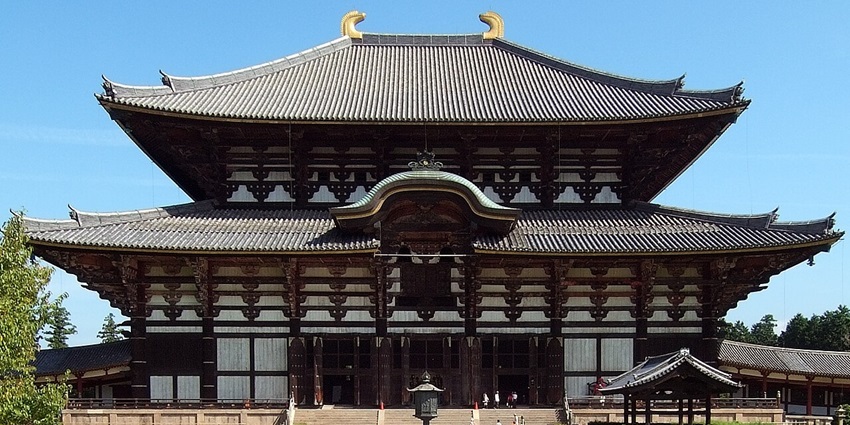
Photo: Wiiii / Wikimedia Commons
Nara’s Todai-ji Temple is a fantastic historical landmark famous for containing a Daibutsu, or Great Buddha, one of the largest bronze Buddha statues in the world. Todai-ji was key in helping spread Buddhism across Japan and is still an important religious and cultural icon today. There is also a fairly large herd of deer that lives on the temple grounds and wanders around freely, which are considered sacred by the Shinto religion as messengers of the gods. These deer provide a distinctive and beautiful ambience to the location, making Todai-ji not just a spiritual hotspot.
Location: Nara City, Nara Prefecture
Major Attractions: Great Buddha (Daibutsu), Enormous wooden building, Sacred deer
4. Hiroshima Peace Memorial Park
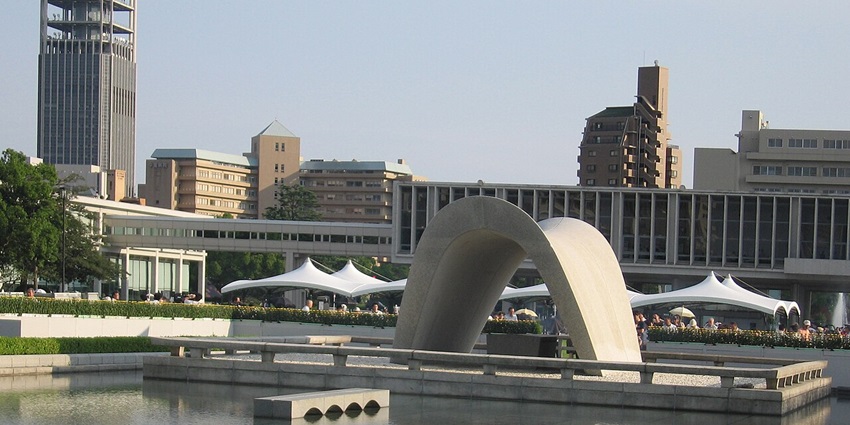
Photo: Netherzone / Wikimedia Commons
Hiroshima Peace Memorial Park is a haunting and sorrowful reminder of the victims of the atomic bombing of 1945. The Atomic Bomb Dome is the focal point of the park and is one of the few structures that survived the blast, being preserved with great care as a UNESCO World Heritage Site to warn generations to come about the destruction caused by nuclear arms. It contains a museum and various monuments that guide the visitor through the event and effect of the bombing, a deeply contemplative experience. The Hiroshima Peace Memorial Park is a poignant reminder of hope and resilience.
Location: Hiroshima City, Hiroshima Prefecture
Major Attractions: Atomic Bomb Dome, Memorial monuments, Peace museum
5. Toshogu Shrine Of Nikko
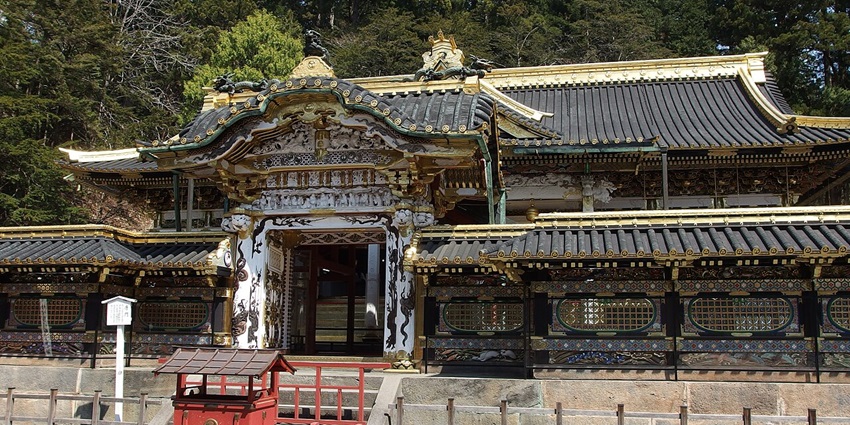
Photo: Guilhem Vellut / Wikimedia Commons
Toshogu Shrine at Nikko is a finely adorned Shinto shrine dedicated to Tokugawa Ieyasu, the founder of the Tokugawa Shogunate, which ruled Japan for over 250 years. The shrine is renowned for its colours, wooden carvings, and elaborate decorative detail typical of the Edo period. Toshogu is situated in a peaceful forest environment and presents tourists with a peaceful setting along with historical greatness. Among its numerous artistic highlights, the shrine contains the famous “Sleeping Cat” relief, representing peace and protection, and the mythical “Three Wise Monkeys,” representing the slogan “see no evil, hear no evil, speak no evil.”
Location: Nikko, Tochigi Prefecture
Major Attractions: Vibrant colours, Intricate wood carvings, Sleeping Cat carving, Three Wise Monkeys
6. Osaka Castle
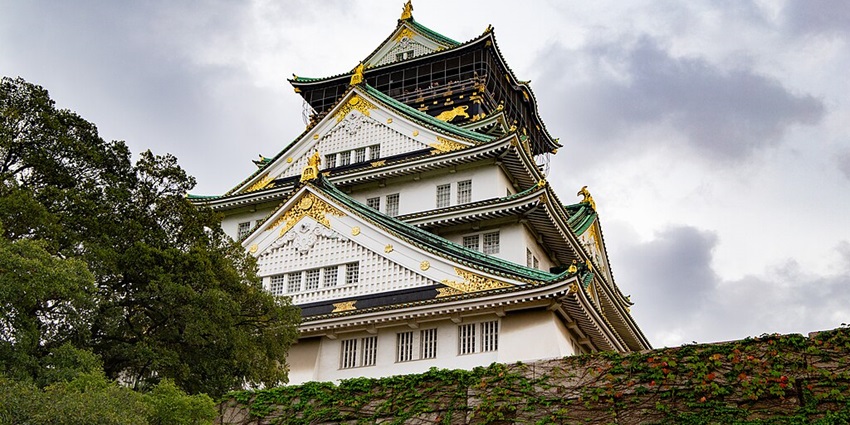
Photo: Ian G Shingler / Wikimedia Commons
Osaka Castle is a strong reminder of the unification of Japan and its military prowess. Sophisticated presentations of life as a samurai, war, and the military strategic importance of the castle are observed. It is surrounded by a gigantic park that is an otherworldly presence to behold when in bloom during the cherry blossoms, which individuals from the town and from across the city come to witness. The park also has different events which occur throughout the year, and Osaka Castle is thus a dynamic centre of history, nature, and tradition in the city.
Location: Osaka City, Osaka Prefecture
Major Attractions: Ancient castle, Samurai artefacts, Cherry Blossom Park, Cultural festival
7. Great Buddha Of Kamakura (Daibutsu)
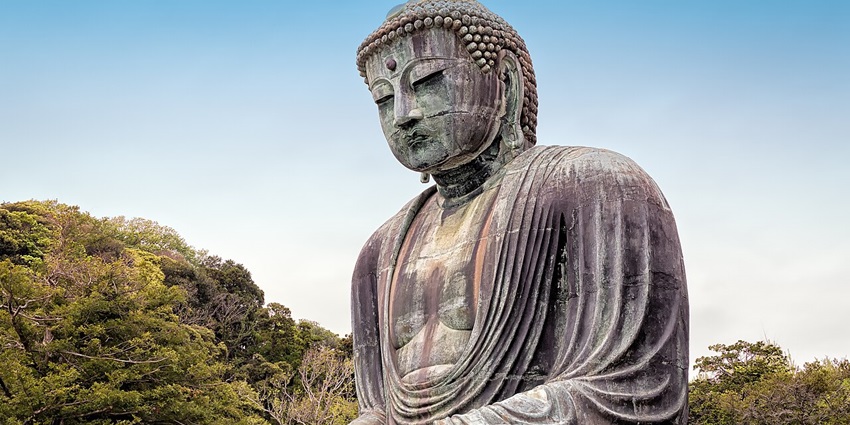
Photo: Ray in Manila / Wikimedia Commons
The Kamakura Great Buddha is a massive outdoor bronze statue in Kotoku-in Temple, dating back to the 13th century. It stands approximately 13 meters high and depicts Amida Buddha as a gigantic being, one of the country’s most recognised and longest-lasting symbols. It embodies Kamakura’s past as a cultural and political capital of Kamakura times. People are attracted to its tranquil demeanour and kingly bearing, so the Great Buddha is one site that history buffs, spiritual scholars, and aficionados of Japanese aesthetics cannot afford to miss.
Location: Shirakawa City, Gifu Prefecture
Major Attractions: Traditional gassho-zukuri houses, steeply pitched, Thatched roofs
8. Shirakawa-Go Village
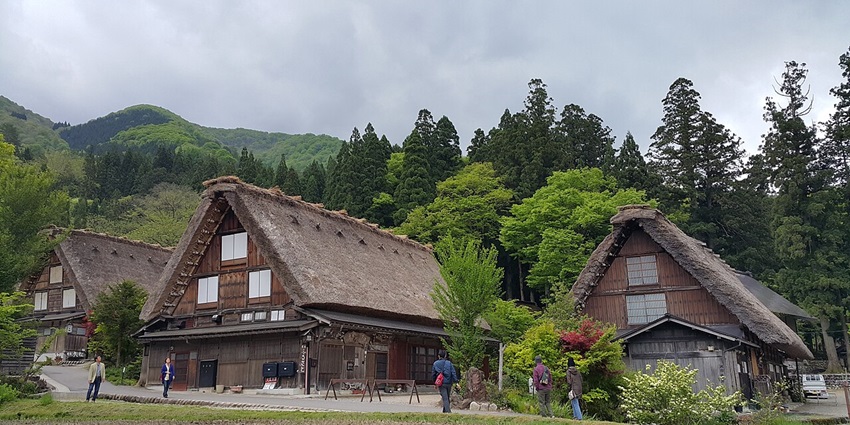
Photo: Chainwit / Wikimedia Commons
Shirakawa-go is a World Heritage village renowned for its distinctive traditional gassho-zukuri houses with thatched roofs of steeply pitched design for heavy snow load protection. Hidden within an inner valley abutting mountains, the scenic village offers visitors a glimpse of Japan’s rural heritage and traditional farming way of life. The majority of the ancient homes have been well-preserved as museums, where people can walk through the buildings and the way of life of the previous generations. The natural scenery of Shirakawa-go varies seasonally, making it particularly fascinating in winter when snow covers roofs, and in autumn when autumn leaves paint the landscape in colours.
Location: Shirakawa Village, Gifu Prefecture
Major Attractions: Gassho-zukuri houses, Thatched roofs, Rural landscape, Seasonal view
9. Miyajima Island (Itsukushima Shrine)
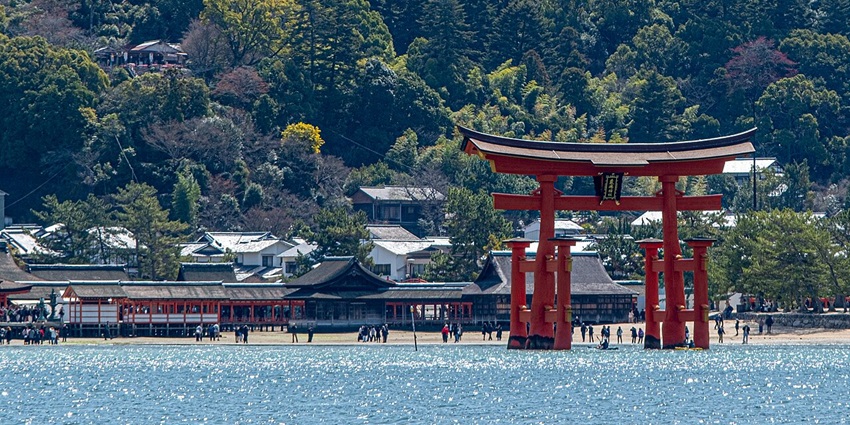
Photo: Winniepix / Wikimedia Commons
Miyajima Island is famous for the old Itsukushima Shrine, a sacred Shinto shrine and its stunning “floating” torii gate, seemingly floating in mid-air above the ocean at high tide. Dating from the 6th century, the shrine is filled with a very spiritual ambience and lies against the picturesque background of the Seto Inland Sea. Tourists not only have the opportunity to admire the beauty of the shrine’s architecture but also the island’s natural scenery, including seeing friendly deer roaming freely around the grounds, which provides a rich experience of cultural heritage and nature.
Location: Hatsukaichi City, Hiroshima Prefecture
Major Attractions: Floating torii gate, Itsukushima Shrine, Scenic hiking trails, Friendly deer
10. Kenroku-En Garden And Kanazawa Castle
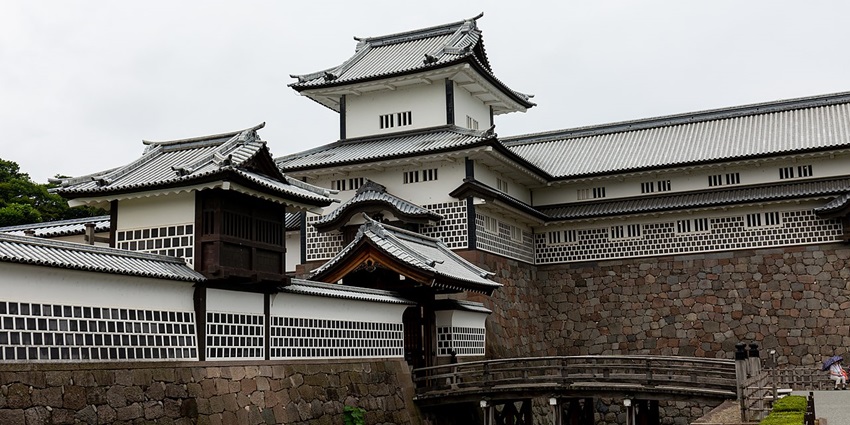
Photo: Balon Greyjoy / Wikimedia Commons
Kenroku-en Garden, situated close to the Kanazawa Castle, is known to be one of Japan’s three most beautiful gardens. World famous for its symmetry layout, the garden is characterised by a stunning collection of natural features like calm ponds, waterfalls running down steep slopes, tiny tea houses, and varied seasonal flowers whose colours transform with the seasons. This breathtaking landscape provides visitors with a peaceful haven and a chance to appreciate distinctive Japanese garden work in all its beauty. Aside from the garden, Kanazawa city itself boasts a great deal of history with its preserved samurai quarter and geisha district.
Location: Kanazawa City, Ishikawa Prefecture
Main Attractions: Classic garden, Ponds, Waterfalls, Tea houses, Samurai districts
Discover Japan’s rich past by exploring its historical sites, where centuries of civilisation are re-enacted with the best architecture, beautiful nature, and fascinating tales. All of the historical places in Japan offer a special look into the past, enriching your journey with lifelong memories. Start booking your trip today with TripXL and sink into the boundless charm and cultural majesty that define Japan’s amazing history.
Cover Photo: Martin Falbisoner / Wikimedia Commons


 WhatsApp
WhatsApp
 Twitter
Twitter









